The Necessity of the Block In
"The noblest pleasure is the joy of understanding.” -Leonardo da Vinci
For this next post I’ll be discussing the importance of the block in as it pertains to the foundations of drawing. I realize that for the beginner, it is all too easy to become visually overwhelmed by how our eyes can be swept up by detail, structure and interlocking forms. They’re definitely is a massive amount of information for one to interpret when it comes to applying it to a two dimensional surface.
This is where the block in comes in. The block in can be best understood as a sort of anchor or integral skeletal system of a drawing. The more accurate and solidly structured block in there is, the least amount of issues the artist will be dealing with in the long run. The block in is easily concluded as the most important step in the progress of a drawing.
What I find beautiful in the way that I was taught was that in this kind of traditional system, it does not allow you to move forward until each progressive step is clearly defined and established. It is a way to visually interpret and isolate any pending problems. If a drawing issue were to arise, one can immediately identify its origin.
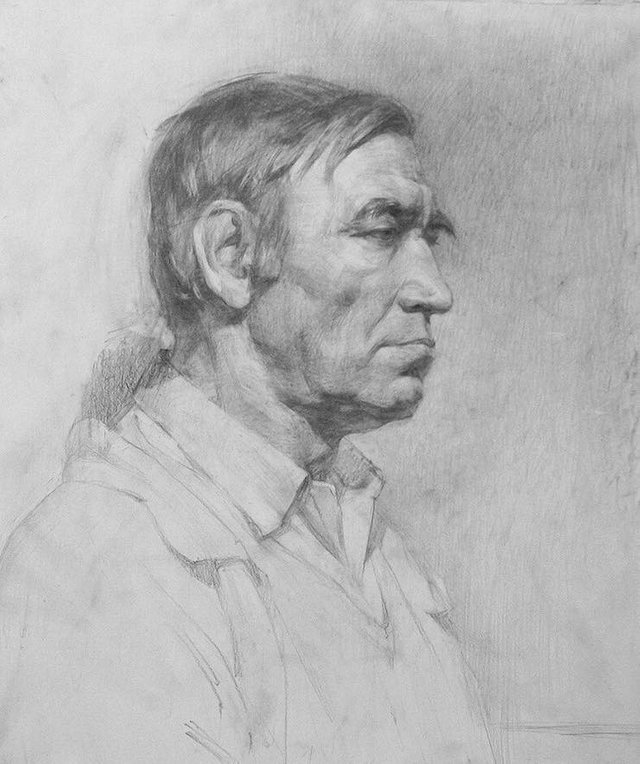
(This drawing is definitely Russian in origin, but the artist is currently unknown to me.)
For the purposes of this lesson I’ll be working on a master copy drawing from beginning to end to illustrate the importance of a well defined block in.
At this stage of our development, it is imperative that we retain simplicity in the block in. You want to always be mindful in that you don’t want to break down shapes to fast. If there is anything from this post that you really need to stick with you, just remember these three simple words...Big. Simple. Shapes.
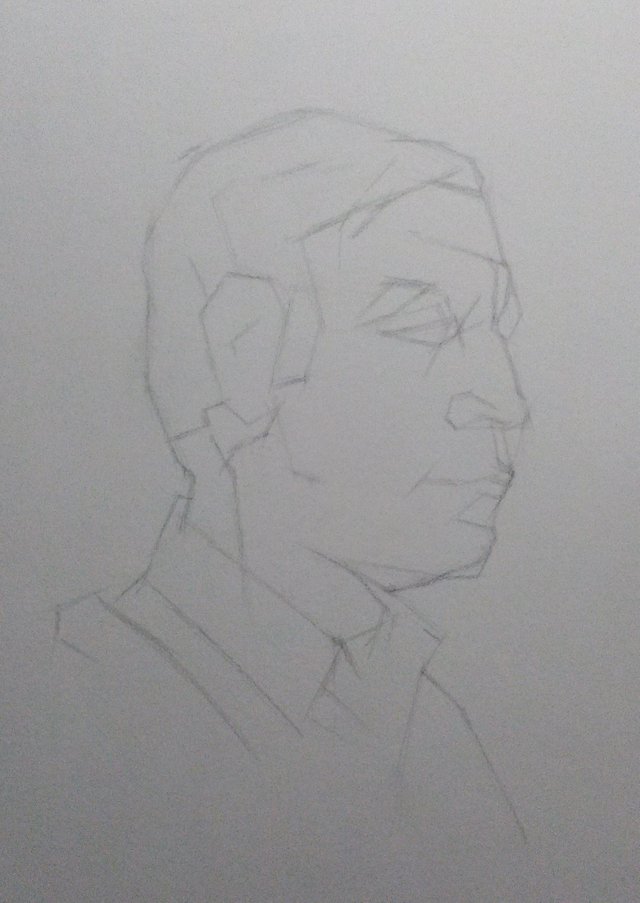
No matter how difficult it may be to resist, it is also very important to stick to the use of straight lines. Just as my teacher always told me, always remember “Curved lines can’t be measured”. For the beginner, it is vital that the use of a skewer remain consistent throughout the progress of the drawing to preserve accuracy. To give an idea on how the skewer is used, hold it before your drawing and subject with your elbow locked either vertically, horizontally, and diagonally. Now with your dominant eye and the other closed, you’re wanting to search and compare these shapes and “coincidences” (aspects of shapes, lines, and forms) with your current drawing. If these parallels aren’t lining up, you’ll know how to adjust your block in accordingly. Keeping in mind you can also use the end of your skewer and the tip of your thumb to “measure” the width and heights of these shapes. By now you’re probably finding yourself interpreting your subject in a visually abstract manner. This is exactly what you want. You’re basically wanting to treat it as a flat abstract puzzle.
I understand as of now it might be a little difficult to conceptualize, but as the drawing naturally progresses as a whole from the larger dominant shapes to the smaller shapes, lines will eventually become rounded as if they were to do so on their own.
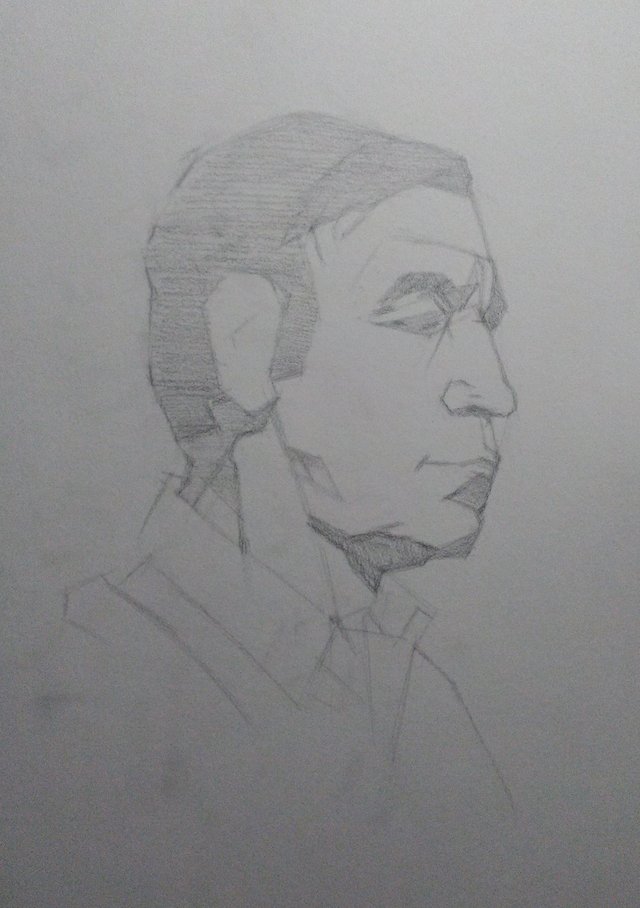
At this stage of the drawing’s development, it is helpful to mass in the shadow shapes and darker valued shapes. As of now, don’t concern yourself with the mid tones, just the absolute extremes. The accuracy in the value of the shadow shape isn’t as important as you might think right now, as it merely functions in separating the light and the dark. In doing this helps break down the block in even further as it shows even clearer the inaccuracies of this interlocking puzzle. Filling in these shadow shapes are what as known as a “false tone”. What’s important here is that the false tones are unified and even. It helps if all the pencil/charcoal strokes are going in the same direction.
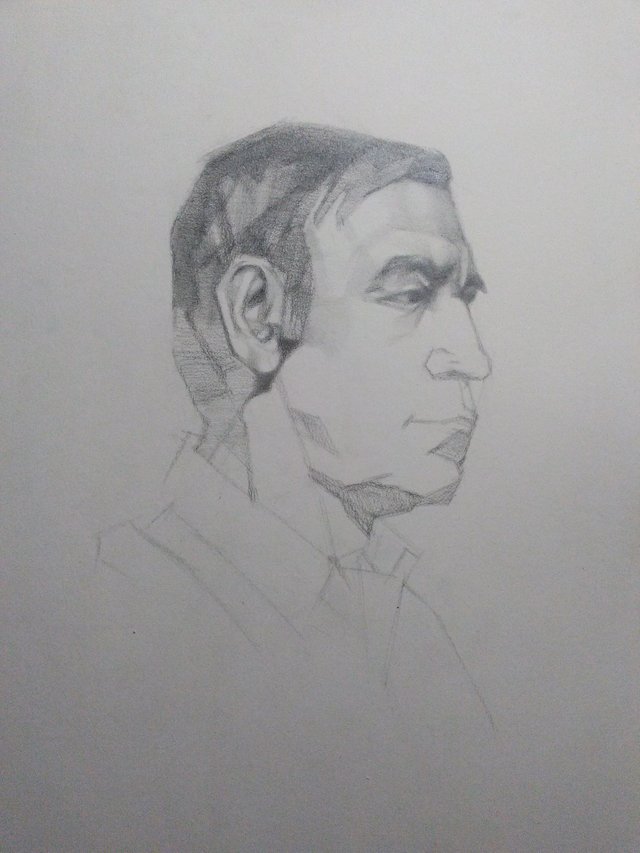
Here is the part where it gets tricky.
(I can assure you that the concept of rendering form will be discussed in depth and in a separate post in the near future.)
To begin turning form, I decided on a large enough section as to accurately establish the value range from the core shadow (also called the terminator line) up into the light. The core shadow is the point where the shadow ends and the light begins.Essentially what I’m doing is treating all forms as if they were a sphere. To have the ability to think in this way and remain alert of all the interlocking planes is very sculptural when it comes down to it.
Rendering these forms accurately gives you a solid and confident comparison to the adjacent forms. In these initial comparisons, I am firmly establishing my lightest lights and darkest darks. In doing this creates a quantifiable framework of value. This is what is known as “keying your values”. Remember, always work on your darks first. In addition I am also zeroing in on the shadow shapes value at the same time.
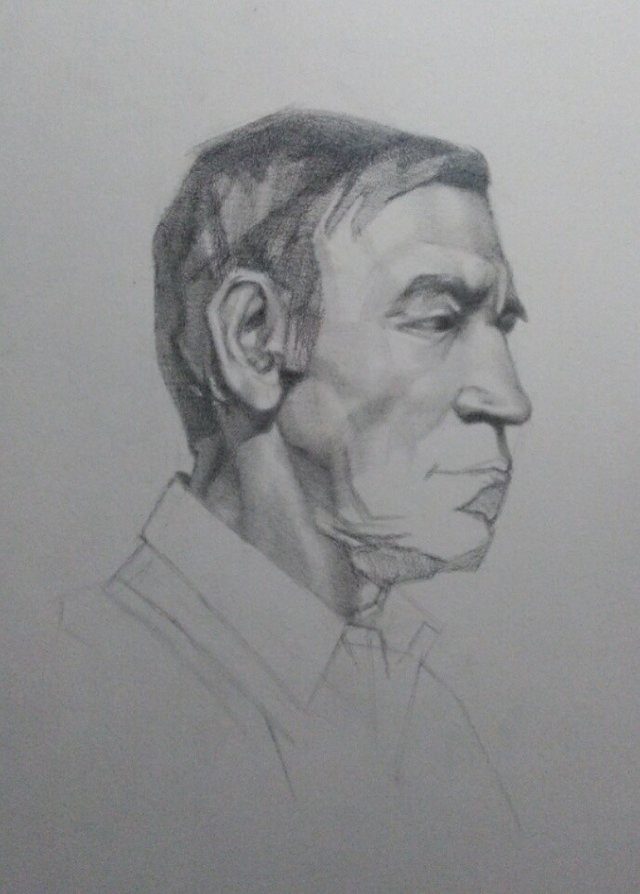
Almost there! Working slowly and surely..consistently across and downwards merging all the forms.
Throughout the process of the drawing, I'm constantly reminding myself in that the slower I work strangely enough the faster I move along. No matter how far the drawing develops, it is very important in that I am always conscious of the block in.
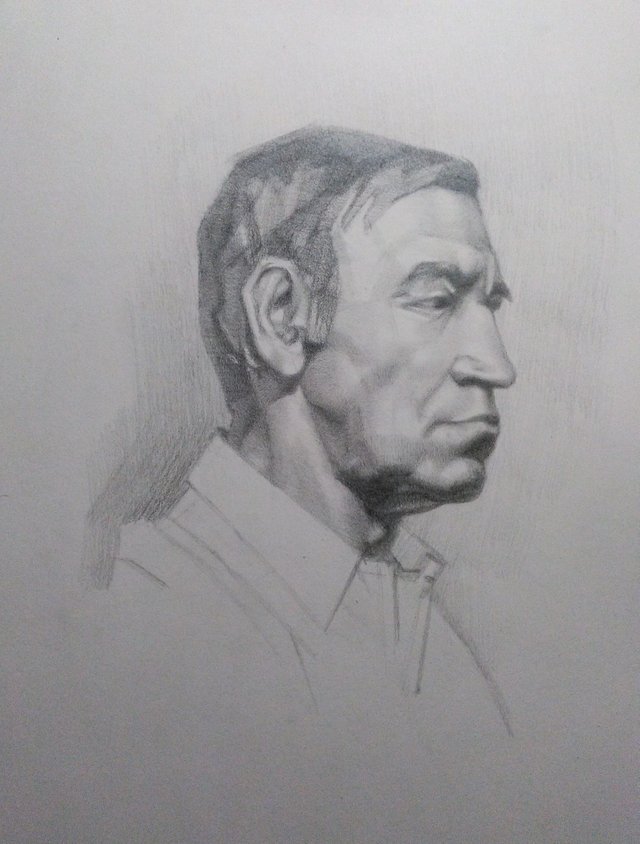
All done! Now before I decided I was finished I went ahead and massed in the background with a light tone and made adjustments all around the drawing where I felt they were needed such as sharpening some edges and pushing some values.
Once again, feedback is always welcome. Please feel free to let me know what you think?
Thanks for reading Everyone!
James Hansen
https://jameszenartist.weebly.com/
What a wonderful example for this lesson in blocking. I never thought of drawing in this manner. I really like the aspect that promoted using only straight lines. It ties into something I heard a painiter say about only making a stroke at a time and not to make a bunch of soft little marks. That that was a big difference between the illustrator or drawer versus the painter. That the painter works his material using his entire arm and the drawer uses the hand from the wrist.
I'm really looking forward to trying out this lesson for myself.
Downvoting a post can decrease pending rewards and make it less visible. Common reasons:
Submit
@yombo Thank you so much, I really appreciate it. And I'm glad you found it helpful. Yeah, I can understand that. When the block in is based off of executive and definitive decisions, only then that gives us something to build upon and rely on. We can't determine the course of our future decisions if the previous marks are lazily or ill defined. In addition, routinely stepping back from your drawing will work wonders :)
Downvoting a post can decrease pending rewards and make it less visible. Common reasons:
Submit
your way of sketching from straight lines is very new and interesting to me. Never saw anything like this. Greatly done!
Downvoting a post can decrease pending rewards and make it less visible. Common reasons:
Submit
@fr3ezee Thank you so much :) Yeah, this method essentially stems all the way back to the Renaissance. If interested, please stay tuned for more lessons like this in the near future ;)
Downvoting a post can decrease pending rewards and make it less visible. Common reasons:
Submit
Sure man.
Downvoting a post can decrease pending rewards and make it less visible. Common reasons:
Submit
Congratulations @jameszenartist! You have completed some achievement on Steemit and have been rewarded with new badge(s) :
Click on any badge to view your own Board of Honor on SteemitBoard.
For more information about SteemitBoard, click here
If you no longer want to receive notifications, reply to this comment with the word
STOPDownvoting a post can decrease pending rewards and make it less visible. Common reasons:
Submit
@originalworks
Downvoting a post can decrease pending rewards and make it less visible. Common reasons:
Submit
The @OriginalWorks bot has determined this post by @jameszenartist to be original material and upvoted(1.5%) it!
To call @OriginalWorks, simply reply to any post with @originalworks or !originalworks in your message!
Downvoting a post can decrease pending rewards and make it less visible. Common reasons:
Submit
Good infos. I love drawing both digital and traditional and i think your post made me wanna rething over my style cuz i mostly lose my path while drawing ^^ maybe thats why i use eraser too much. Thank you for great informations and awesome drawing btw ^_^ Upvoted!!
Downvoting a post can decrease pending rewards and make it less visible. Common reasons:
Submit
Thank you! Glad I'm able to help :)
Downvoting a post can decrease pending rewards and make it less visible. Common reasons:
Submit
Congratulations @jameszenartist! You have completed some achievement on Steemit and have been rewarded with new badge(s) :
Click on any badge to view your own Board of Honor on SteemitBoard.
For more information about SteemitBoard, click here
If you no longer want to receive notifications, reply to this comment with the word
STOPDownvoting a post can decrease pending rewards and make it less visible. Common reasons:
Submit
This is so fun to read and very informative. Thanks, mate! :)
Downvoting a post can decrease pending rewards and make it less visible. Common reasons:
Submit
Congratulations @jameszenartist! You have completed some achievement on Steemit and have been rewarded with new badge(s) :
Click on any badge to view your own Board of Honor on SteemitBoard.
For more information about SteemitBoard, click here
If you no longer want to receive notifications, reply to this comment with the word
STOPDownvoting a post can decrease pending rewards and make it less visible. Common reasons:
Submit